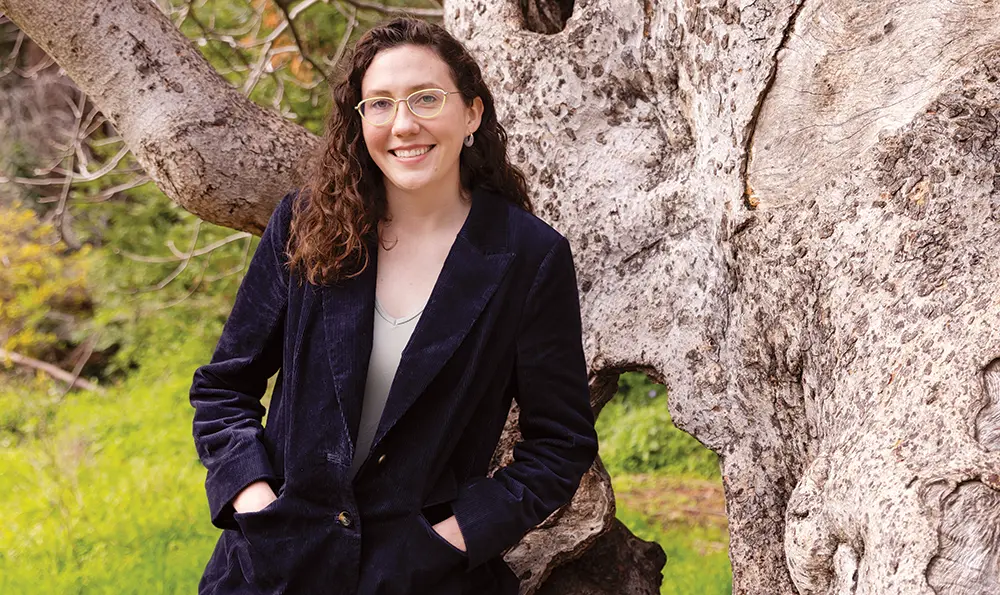Fast Forward
The Right Environment to Make a Bigger Impact
“I didn’t just want to study the decline or ignore what was happening,” she says. “I wanted to intervene in some way.”
Working in habitat restoration and environmental education, Lewis was a natural resource specialist when the city of South San Francisco received a grant to start a restoration program on its largest park, a foothill of San Bruno Mountain.

The Right Environment to Make a Bigger Impact
“I didn’t just want to study the decline or ignore what was happening,” she says. “I wanted to intervene in some way.”
Working in habitat restoration and environmental education, Lewis was a natural resource specialist when the city of South San Francisco received a grant to start a restoration program on its largest park, a foothill of San Bruno Mountain.
Bay Nature named her its 2021 Young Leader Local Hero, and her supervisor estimated that Lewis recruited more volunteers in a year than the city’s parks department had over the previous decade. But when wildfires burned down nearly a third of the park — destroying endangered species habitat and threatening surrounding neighborhoods — a broader role took shape.
“So many threats to the ecosystems and communities I cared about felt out of my control,” Lewis says. “I wanted better tools to address these issues, and decided law school was a good fit for my strengths. Berkeley Law stood out for its fantastic environmental law program and commitment to public interest.”
“There are serious inequities in who has access to nature, with communities of color and low-income communities often having the least,” says Lewis, noting that the San Bruno Mountain area “is literally in many residents’ backyards.”
The publishing editor at Ecology Law Quarterly, Lewis spent her last two summers interning for the U.S. Department of Agriculture’s Office of the General Counsel and for the U.S. Department of Justice’s Environmental Enforcement Section.
Last semester, she externed with the U.S. Department of the Interior’s Board of Land Appeals in the Office of Hearing and Appeals, working closely with administrative law judges to resolve appeals of public lands and natural resources disputes.
“The most challenging aspect of environmental work is addressing the many threats that communities and ecosystems face,” says Lewis, who will clerk for U.S. Ninth Circuit Court of Appeals Judge William Fletcher after graduating. “Climate change, water and air pollution, habitat loss, they all interact and build off each other. Even if you parse out and solve one issue, so many other threats remain. But I also think the complexity and challenge makes environmental work really exciting.” — Andrew Cohen